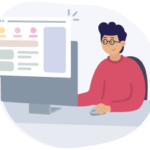We all take digital journeys every day. We scroll through online news, like random photos on Instagram, binge-watch shows on Netflix, and listen to music on Spotify. A digital customer journey is like a route map for businesses as they need to know what we experience at different stages of our journey.
This blog will cover what a digital customer journey is, its importance, key stages, and important metrics. We’ll also talk about the challenges and trends we see in digital customer journeys. Ready? Let’s go!
Contents
How are traditional and digital customer journeys different?
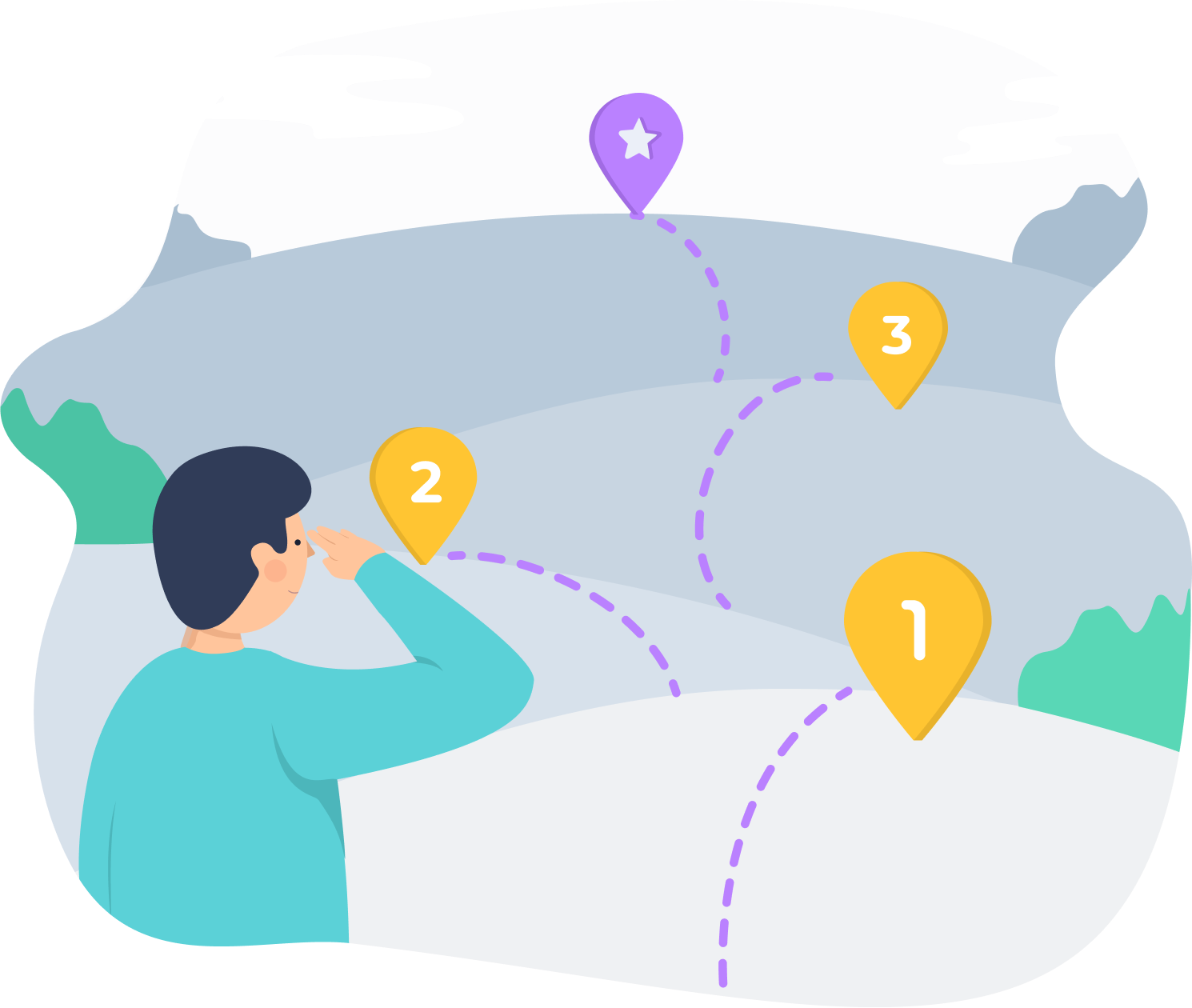
So, what’s the difference between traditional and digital customer journeys? Both kinds of journeys have steps (they are also called stages or phases). These are the actions a customer takes to reach a goal, like creating a presentation or solving a problem, like taking too long to write a sales email.
In traditional journeys, we deal with real-life actions and physical touchpoints. For example, a person goes to a grocery store to buy some stuff or takes a bus to work. It's usually straightforward, though a person might visit several stores. Take Alice, for instance. She might move from one shop to another in a mall to try on shoes. In the end, she buys a pair. If she liked some shoes from another mall, she might come back another day.
A digital customer journey happens online. For example, when opening an airline's website to buy tickets or watching a movie trailer on YouTube. If we're back to Alice, her digital hunt for the perfect shoes might involve e-commerce sites like Amazon or Zappos. She could read reviews to ensure top-notch quality and check size guides to help her decide.
Digital journeys are often omnichannel. This means customers can switch between different online points. Eric, who loves music, could see a new post from his favorite band on Facebook. He checks their website for tour dates. Eric is lucky — there’ll be a concert nearby. He decides to go to it. Eric opens a ticketing site, signs up, fills in his details (which he considers a waste of time), and buys his ticket.
Can digital journeys be complex? Yes, especially if things go wrong. If, in Eric’s case, a ticketing website does not work as expected. It may take too long to load, frustrating Eric. But still, the purchase takes fifteen minutes, much quicker than if Eric would drive to a ticketing office, find parking, wait in line, and buy a ticket.
Another difference is personalization and automation. They are easier online. For example, brands send personalized emails with discounts and recommendations. You’ve probably seen emails like “Steve, stand out with these linen pants!” in your inbox.
Why does the digital customer journey matter to businesses?
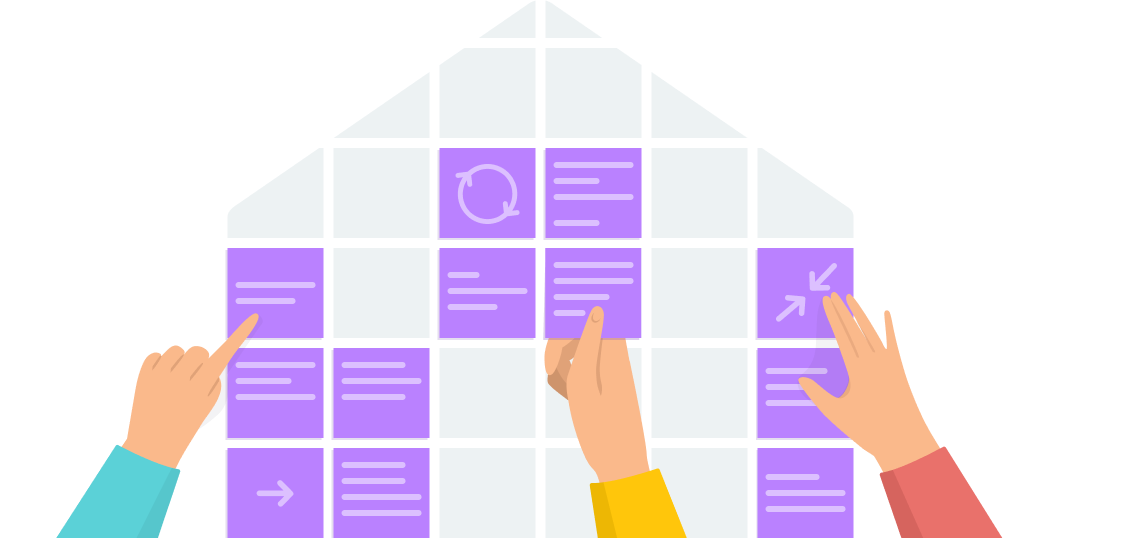
Some people think it’s not as crucial as in-person shopping. But both types are about a business making money. It’s essential for businesses to know how customers feel throughout their journey, whether online or offline.
Why is this important? Because digital experiences can be tricky. Things like a mobile app crashing or online payments failing can create bumps on the digital customer journey. If businesses discover and fix problems quickly, customers will keep coming back.
By tracking the digital customer journey, businesses can detect missed chances. For instance, they might see that some customers leave during checkout because they don’t want to register. A fix could be adding a guest checkout option. Trying new ideas can help bring in more customers.
Also, a lot of businesses work both online and offline. For example, if you run a hotel, customers might talk to you on Instagram while booking online. But when a manager confirms their booking, switch to direct messages on a booking website. So, monitoring every part of the customer journey is key.
Key stages in the digital customer journey
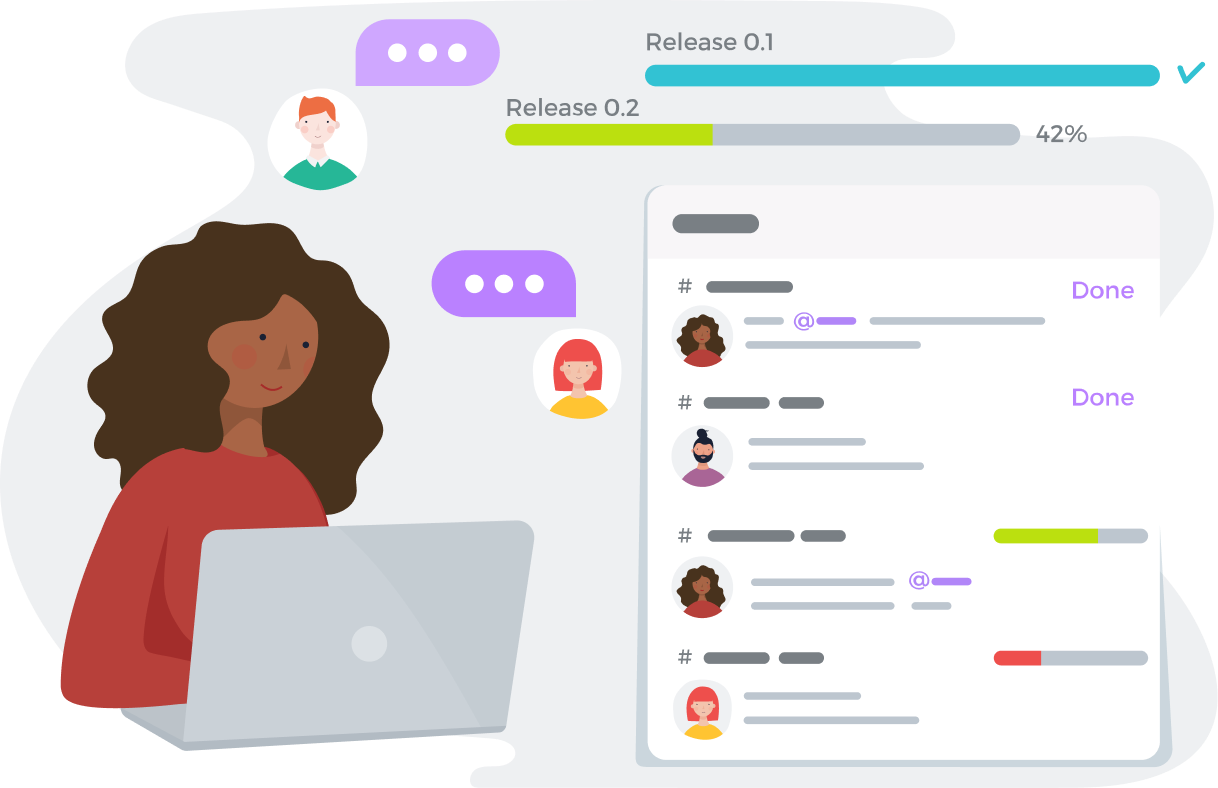
Depending on the business type, digital customer journeys can be of different lengths and complexity. For example, the digital journey of an individual ordering several packs of cat litter will be much shorter and more straightforward than the journey of a business manager searching for video editing software.
There are some basic digital customer journey stages to start with.
- Awareness. A journey starts long before a customer visits your website and orders. They first need to learn about you. This could be from a colleague’s recommendation, an online ad, or a search engine.
- Consideration. At this point in time, they think about whether to use your product. They might compare options, read reviews, or chat with your team.
For B2B businesses, there will be more activities like an online demo session or month-long trial.
- Decision, or Purchase. They’ve made a choice and pay you. E.g.:
- A user installs your mobile game and, to keep playing, either gets its paid version or watches short ads from your partners who pay you for each view.
- A person buys a subscription on your SaaS platform to use advanced functionality unavailable to free users.
- A potential subscribes to your paid newsletters to get business advice from experts.
- A company initiates and completes a procurement process followed by security checks and makes a wire transfer to pay for your enterprise software.
- Retention. The journey doesn’t end after a purchase. There are more stages to focus on.
- If it's a SaaS platform, you may encourage your customer to extend their subscription, upgrade to a more expensive plan, or purchase more licenses.
- If you run an online store, other products might interest this specific customer, like those already on their ‘My favorites’ list or in their cart expecting the purchase.
- If you are a financial or banking institution, you might want to sell your mobile banking users extra services like insurance, online loans, virtual cards, etc.
- Advocacy. This stage directly impacts the first three stages of the digital customer journey as people value and consider other people's opinions. Happy customers spread the word which can lead to more business.
These were the key stages in the digital customer journey. The next stop is data and analytics.
The role of data and analytics in digital customer journeys
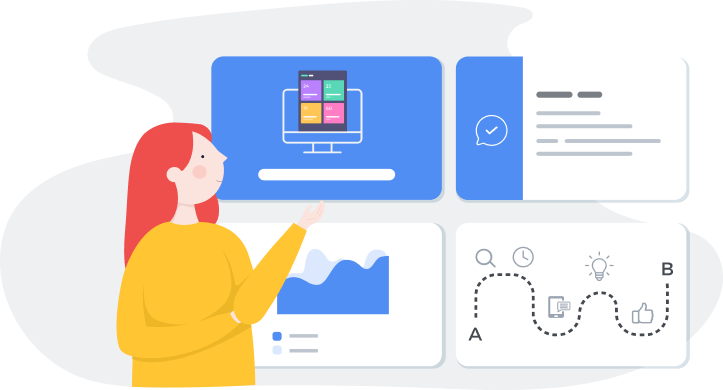
We also need to talk about data and analytics in digital customer journeys. Without strong data, everything you know about your customers is like guessing.
You won't be able to tell whether your guesses are right or wrong and optimize and improve the journey with you.
What data to look for?
- Behavioral data. How your users, customers, subscribers, and website visitors behave when browsing your website, using your app, or interacting with other channels.
- Demographic data: Age, location, education and job titles, language, and other details. You can use them, for example, when launching ads.
- Touchpoints. These are your points of interaction with customers. You might not know about some of them and their role in the digital customer experience.
- Customer feedback. Customer reviews, support interactions, NPS scores, and other data can provide insights into what customers think about your product and business at different journey stages.
Each stage has data worth looking into.
- Awareness stage: web analytics data (e.g., traffic sources and mediums). This information will help you with your marketing and sales efforts. Use it to grow conversion rates.
- Consideration stage: engagement metrics like time spent on page and click behavior. Heat maps and email marketing data will also come in handy by telling you how much people are interested in your offering.
- Decision stage: conversion metrics (e.g., purchase rates, cart-to-purchase conversion rates), abandonment rates, and refunds within the first hours or days of usage.
- Retention stage: post-purchase engagement, customer satisfaction data (e.g., results of a post-purchase satisfaction survey), repeat purchases, churn rates and churn reasons, and support requests. This information will help you understand how well your product meets customers’ needs.
- Advocacy stage: an NPS score, number of referral/affiliate program participants among customers, and community engagement can show you how many customers became your active promoters.
Challenges and trends in digital customer journeys

However, there are challenges to face in digital customer journeys. Let’s discuss the key ones.
Managing omnichannel interactions
Imagine an individual reaches out to you via Instagram to ask whether your online product can solve their problem. You confirm that and send them to your website to create a profile. They have trouble signing up, so contact your support team via live chat for assistance. Then, they must confirm their email address but never get a confirmation email. So, they contact your support agents again. When this issue is solved, they buy a subscription.
Some product features are unclear, so the customer asks your support team for a demo session. Your next move is to introduce them to your customer success team, which will organize the session. How many channels have you counted yet? Many of them. And that’s only the first stage of this digital journey. More interactions and channels will be involved with each new stage.
Managing interactions scattered across multiple channels is challenging, but it is essential to ensure a seamless digital experience. If the journey is mixed, with offline and online channels involved, it will be the next level of challenge as everything cn get really messy.
Data integration
Omnichannel interactions pose another challenge: efficient data integration. Not many businesses can boast of seeing a full picture of their customers’ journeys. The problem is that customer data sits in different places like CRM and ERP software, web analytics tools, social media, survey platforms, etc. Integrating this data takes time and resources. However, if it's not in one central spot, getting a full picture is tough.
Of course, you could try to find the necessary customer data by looking for it in every source you have. Chances are that you won’t be able to access each of these sources or even know about some of them.
Rising customer expectations
With everything changing so fast today and new technology breakthroughs emerging quicker than ever, customers expect more from businesses. Personalization everywhere they go, instant responses, real-time solutions — the full list will be pretty long.
Complex customer journeys
Here, we are talking about B2B and complex products. Such journeys are complicated, lengthy, and hard to track to the full extent. So, it’s easy to miss some critical touchpoints that influence customer decisions and cause lower-than-expected conversion rates.

One can successfully overcome these challenges. Try these approaches, for example:
Use AI to personalize experiences
AI is everywhere, and taking advantage of it is a good idea. We collected some real-life examples for your inspiration:
- Coca-Cola is moving towards personalization with hyper-personalized marketing. With the help of AI, the giant creates campaigns that effectively target its target audience segments based on their consumption habits.
- Starbucks improved its product recommendations — it tailors their recommendations to individual tastes.
- Do you listen to personalized playlists on Spotify? Well, there’s an AI that analyzes your data.
- Airbnb is another platform that uses AI for different purposes, such as offering personalized recommendations.
Automate touchpoints
Automating touchpoints certainly saves time and resources, while driving business results. This is what Bank of America’s mobile app does with its virtual financial assistant.
One more example of automation is Viewing Recommendations from Netflix. Instead of using real people to compile recommendations for each and every user, it uses AI to do the job.
Visualize your customer journey
An informative customer journey map is an excellent tool for understanding your customers. To make it work, you must use actual data about your clientele and involve different departments in the mapping process.
Wrapping up
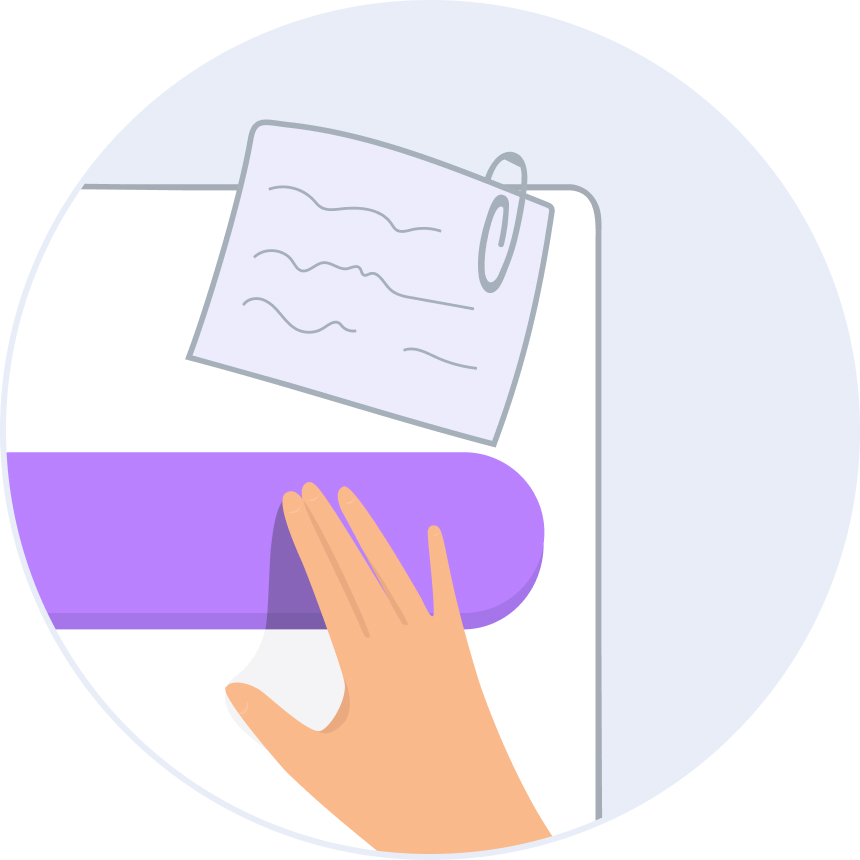
This blog post discussed a digital customer journey and its specifics, highlighting the difference between it and a traditional one.
We provided relatable examples of digital customer journeys in B2C and B2C domains to illustrate what customers go through. We covered typical journey stages and metrics a business can use at each of them.
We talked about the role of analytics in digital customer journeys and where to find data. Then, we covered today’s challenges and offered solutions backed up by examples from real-life businesses.
Things to remember:
- Knowing a customer’s digital journey is essential for growth.
- Digital customer journeys take place in the digital world and are usually omnichannel.
- Today’s customer journeys often contain online and offline steps.
- Businesses can leverage different kinds of data to measure and improve the customer journey.
- Though plenty of challenges exist, companies can overcome them using technology and human resources.


